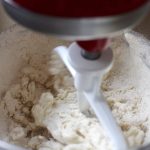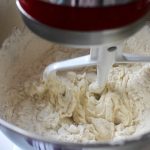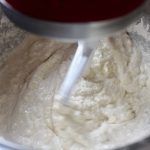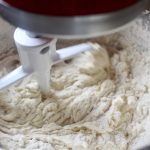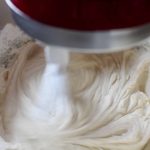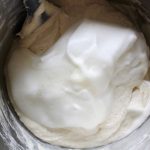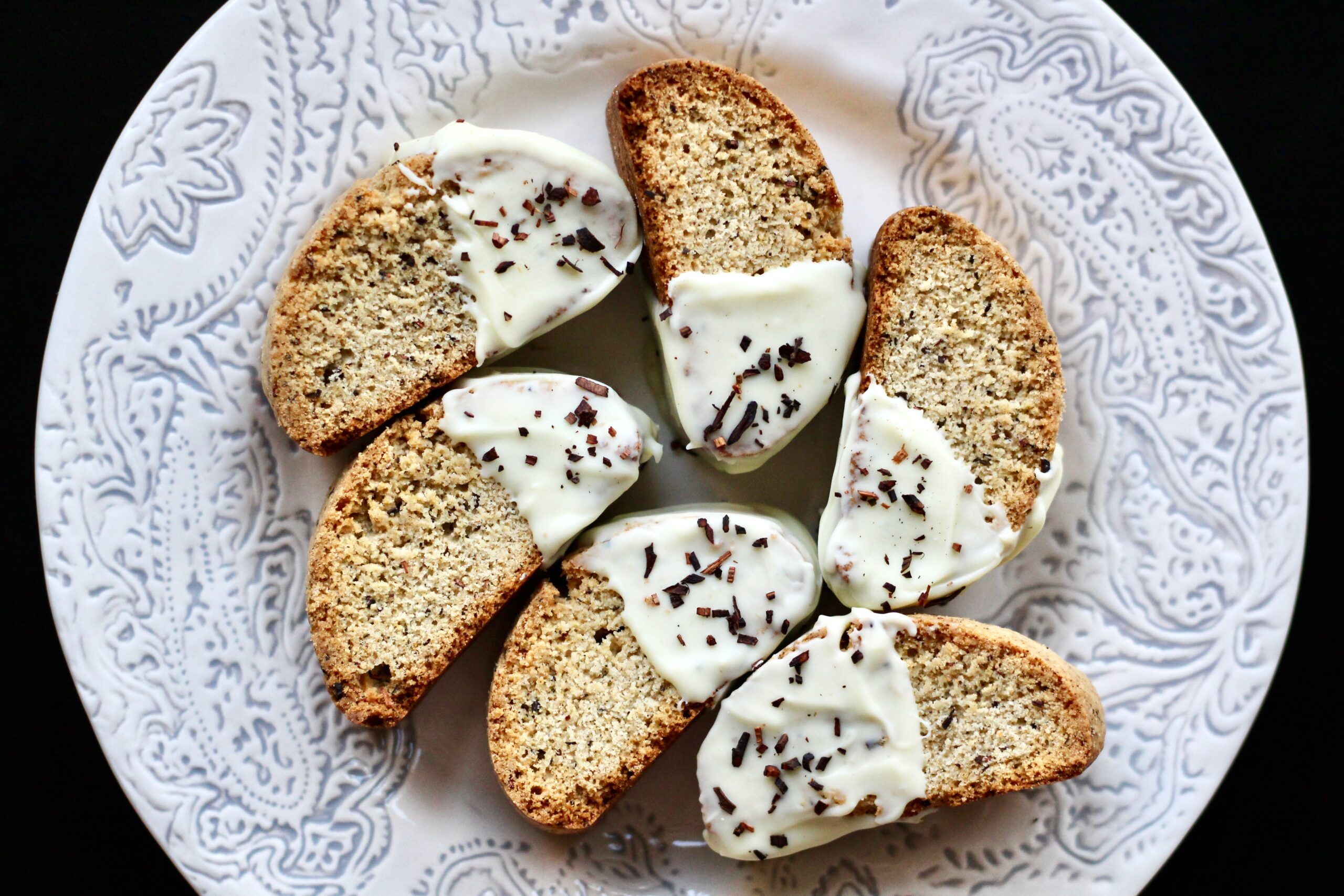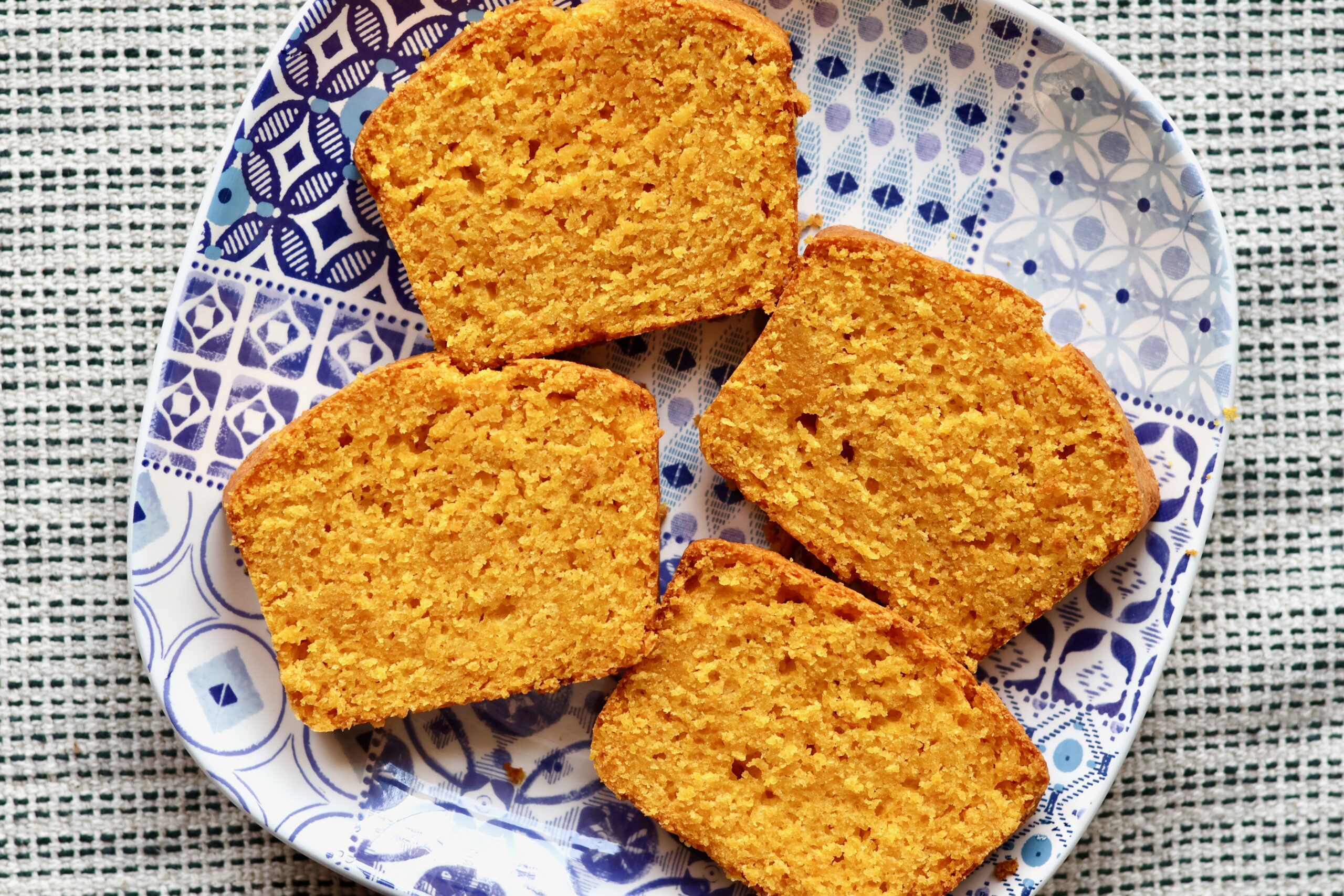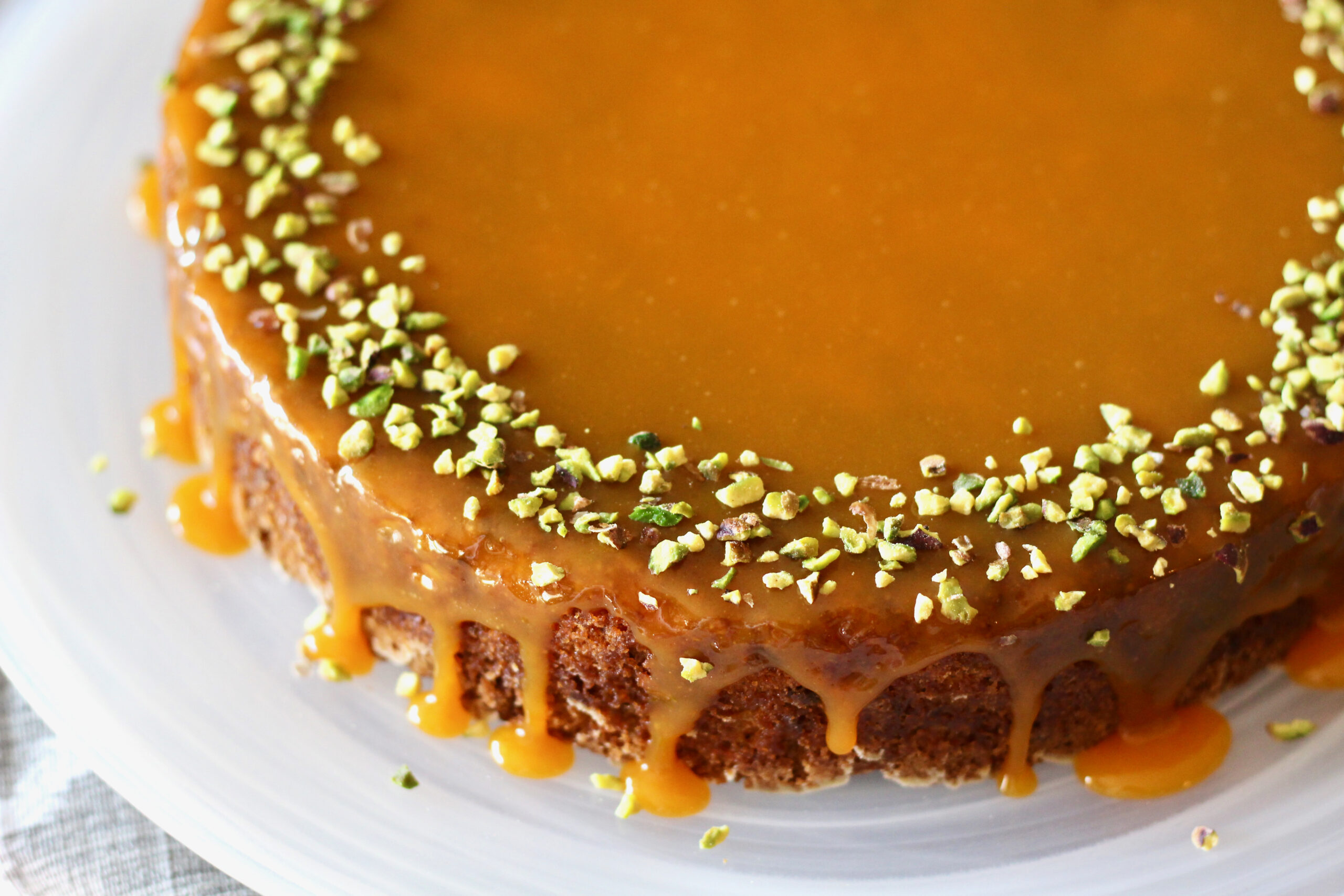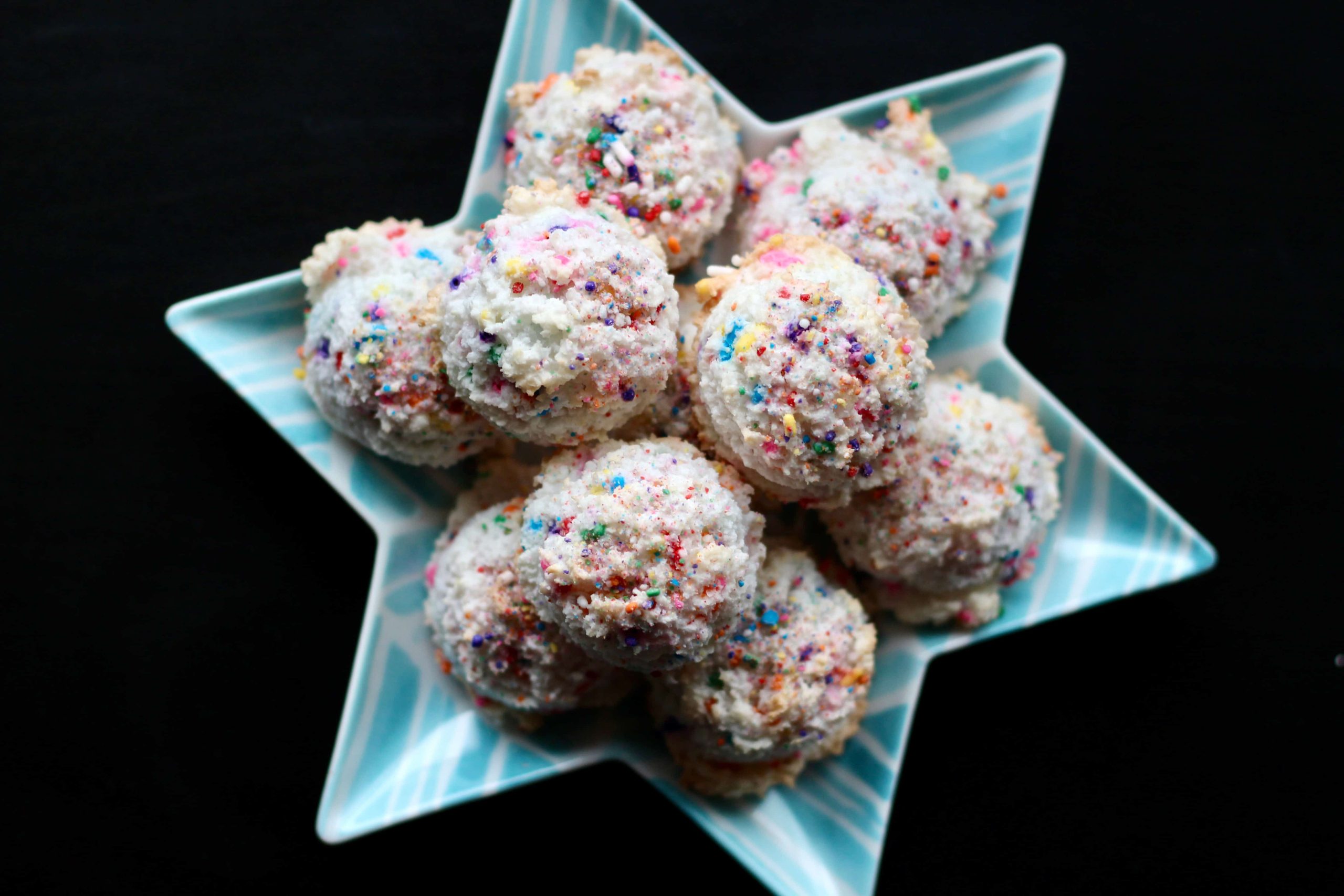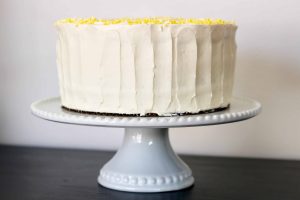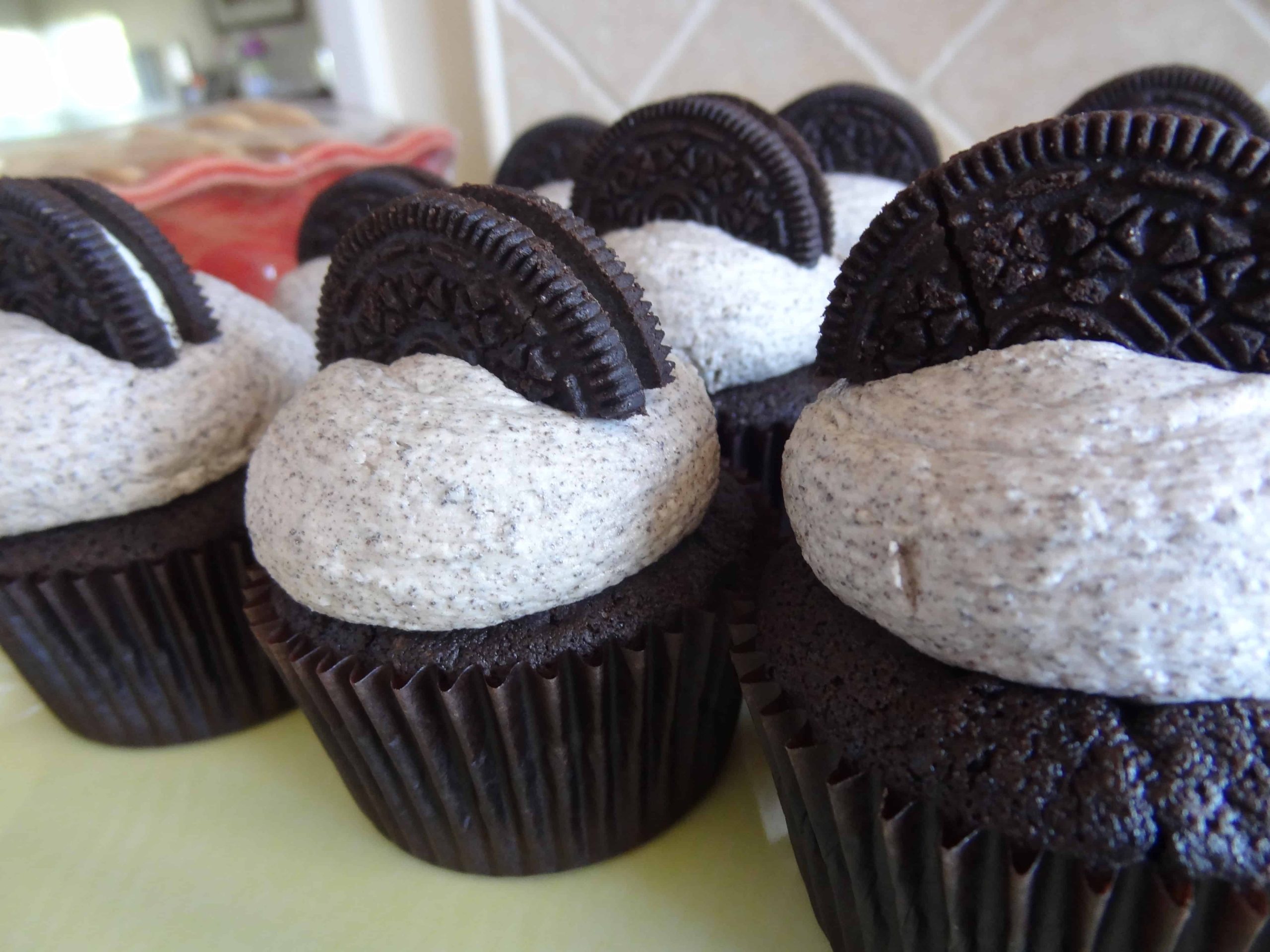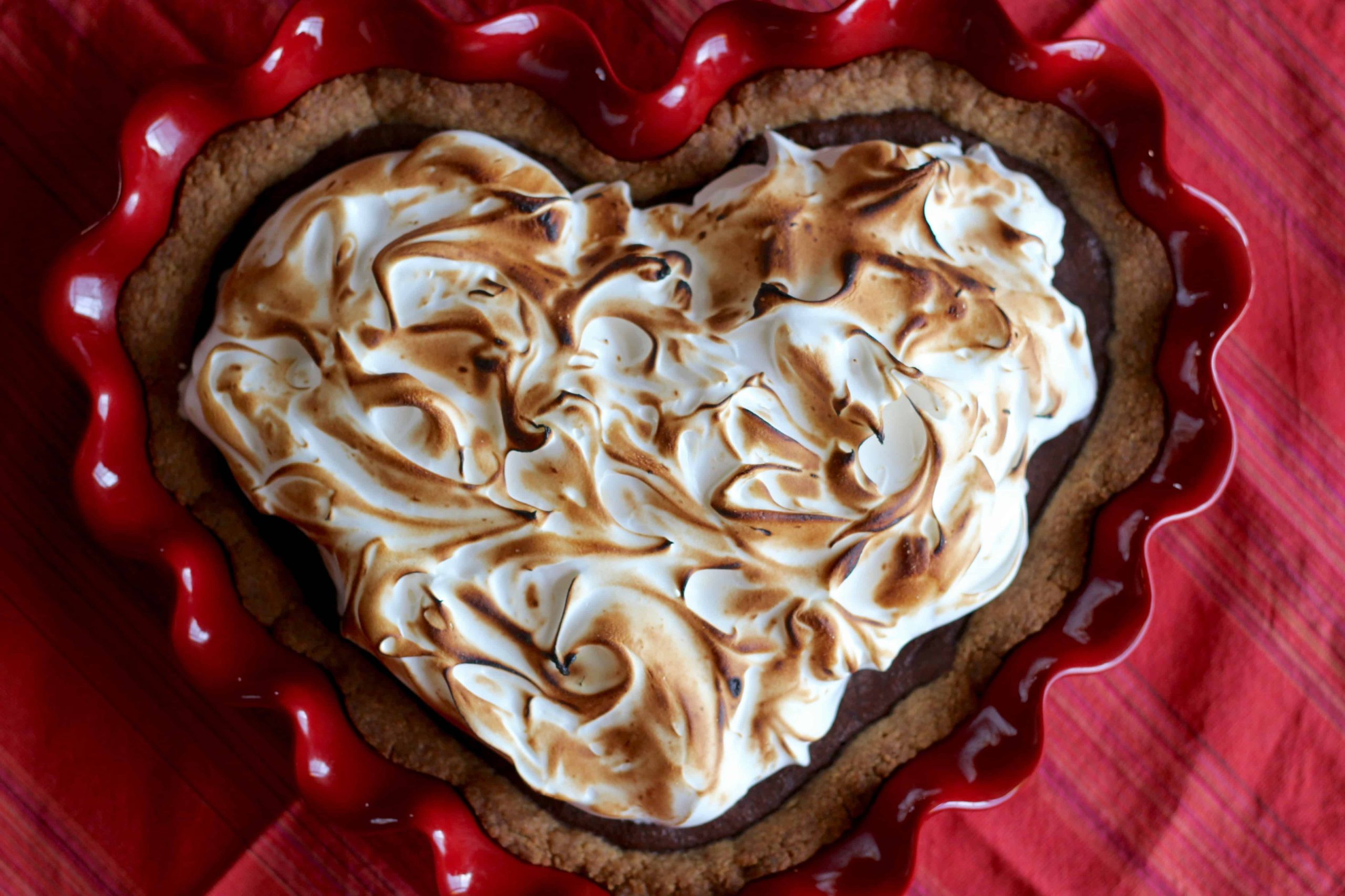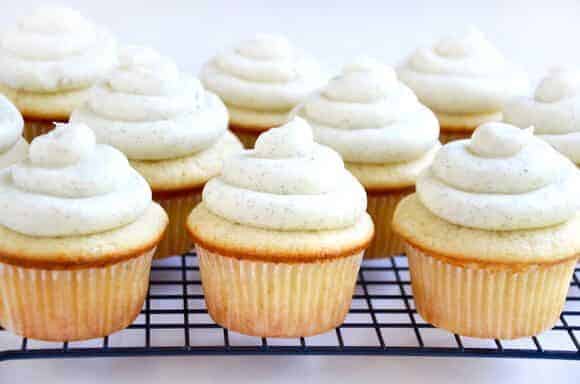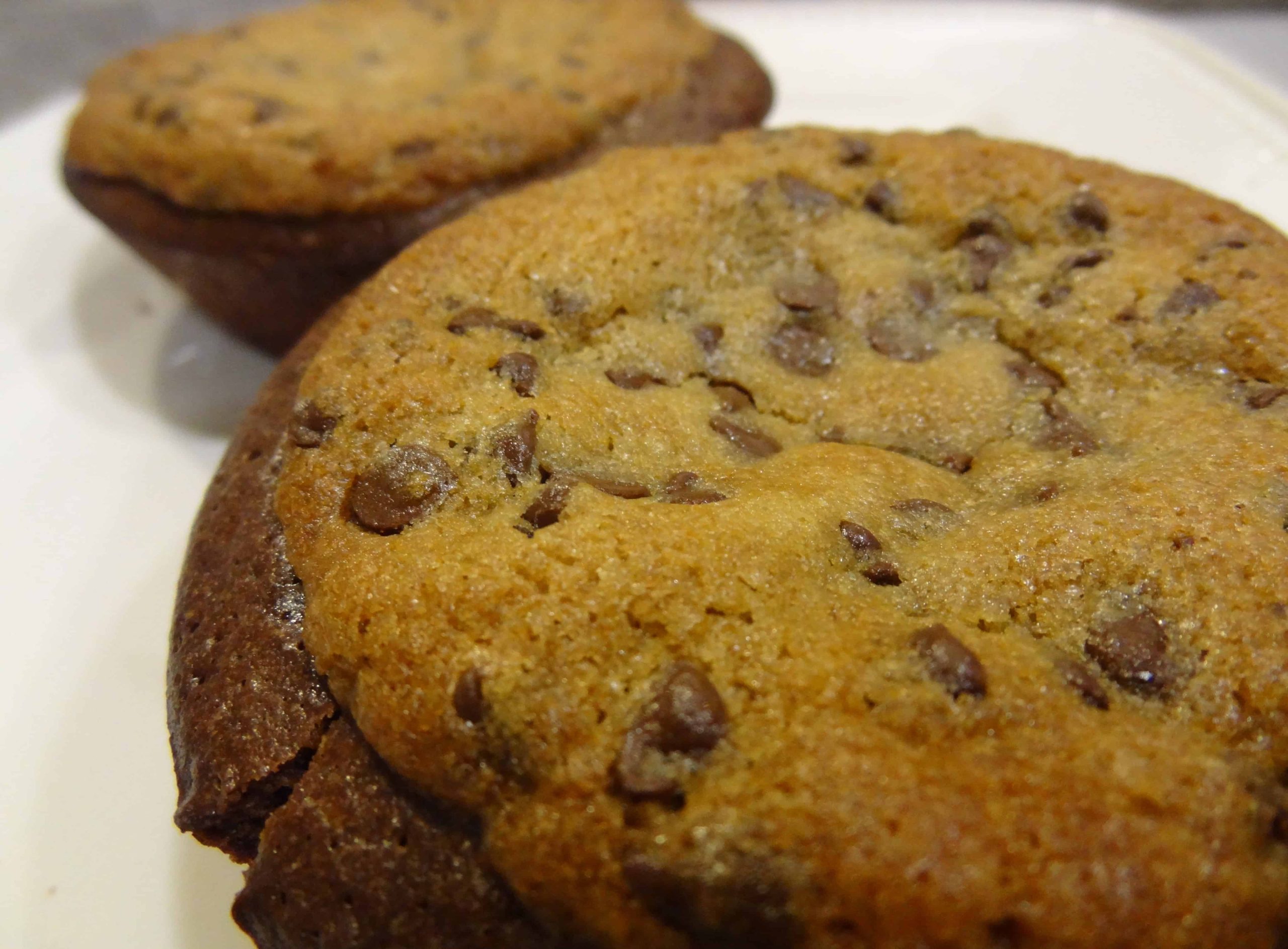
The top of my cake hierarchy reads something like this: chocolate, vanilla (with or without rainbow sprinkles), red velvet, pistachio, coconut– with minor changes in the order depending on mood. Nowhere in this group of cakes is lemon. I’m generally fairly indifferent to lemon desserts; it’s rare that I would choose one over, say, a chocolate-caramel tart or s’mores-anything. But once in a while a dessert comes along that makes me reconsider my cake belief system—that’s my favorite thing about participating in Baked Sunday Mornings for the past 6+ years. Because we bake through each recipe, I always have an opportunity to try things that I wouldn’t necessarily make on my own. BAKED’s Lemon Drop Cake from BAKED: New Frontiers in Baking is one such dessert. I did actually make it about five or so years ago as a small wedding cake for someone, but it gave me problems throughout, and my decorating job was subpar. I also never got to taste it, so it wasn’t a cake that I was rushing to make again. In fact, when I saw it on the baking schedule, I was rather dreading it, especially because it was right before my move halfway across the world back to California.
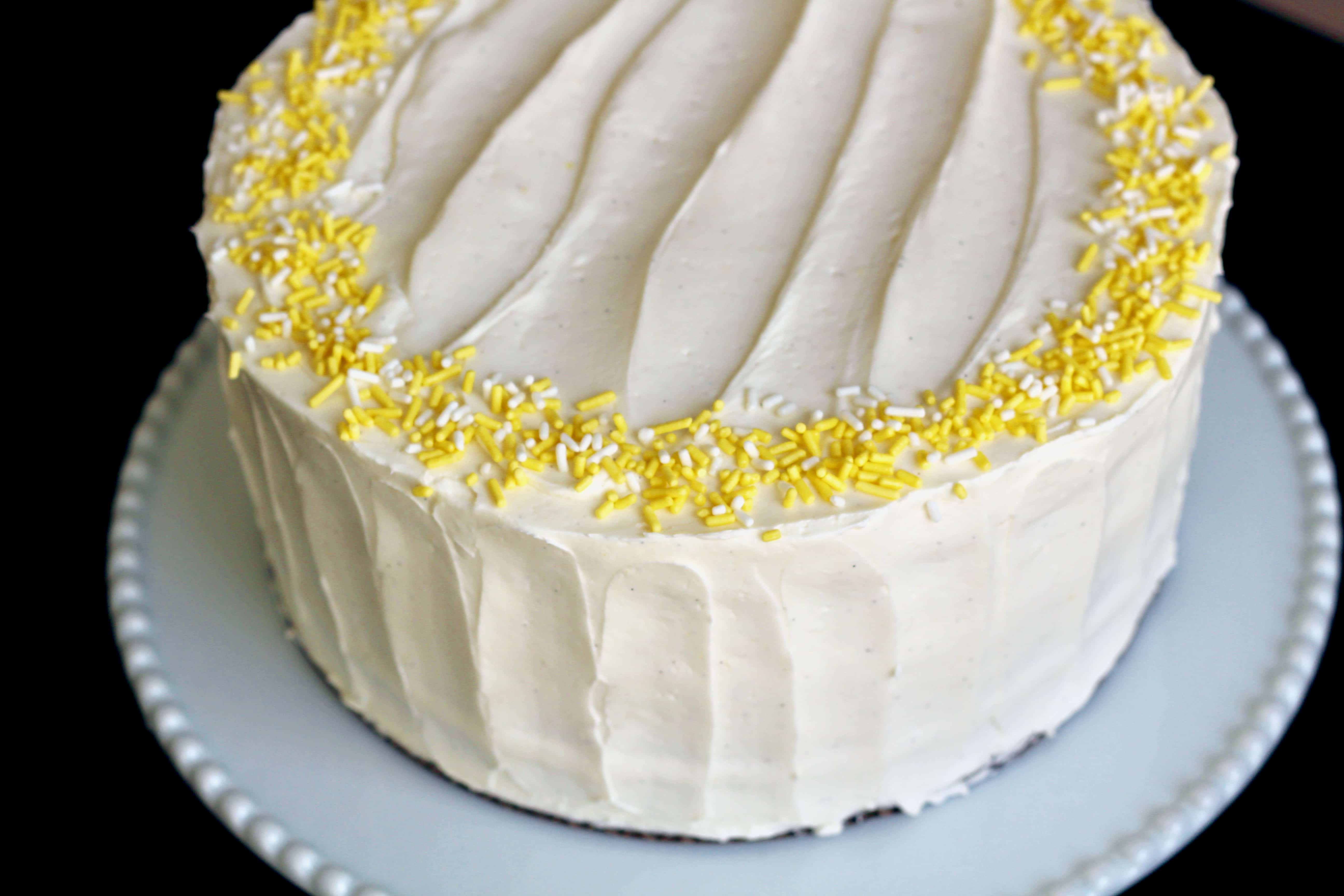
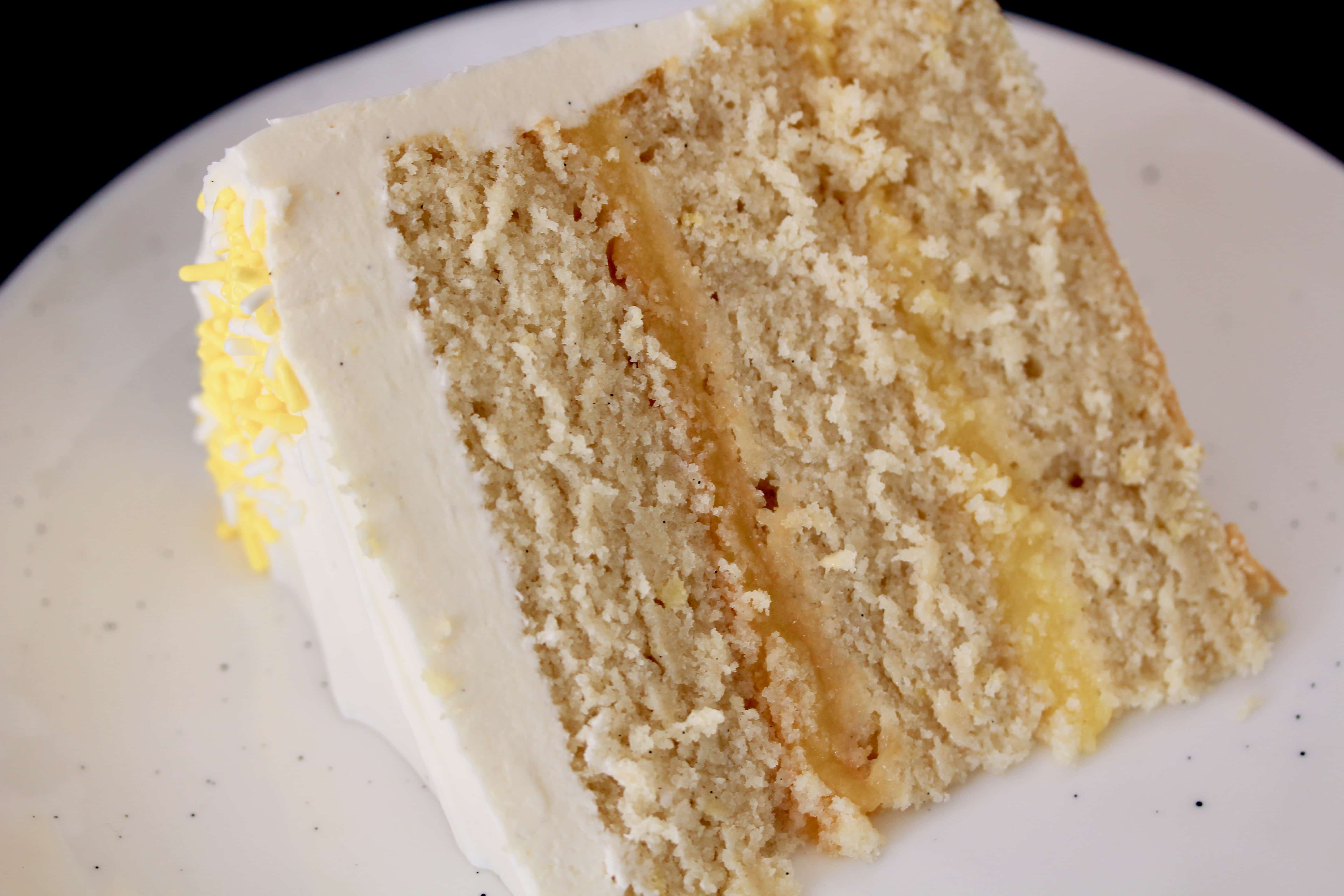
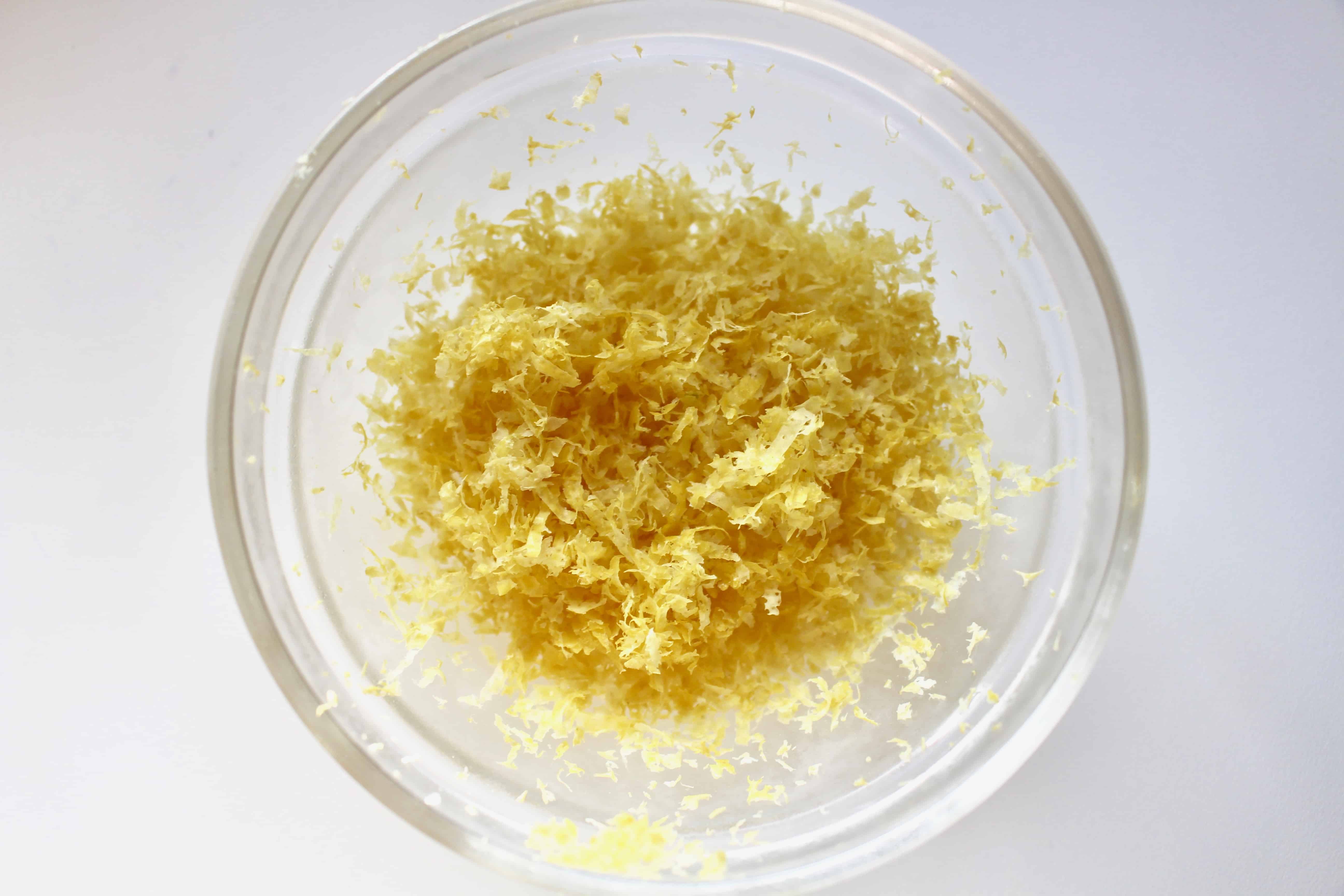
But since I never miss an opportunity to make a layer cake for BSM, this lemon cake was definitely going to happen, come hell or high-water! What I remembered from last time is that my cake layers didn’t rise much and were uneven. Plus, my lemon curd took forever to cook and was very runny, which meant that filling and frosting the cake was like playing Slip n’ Slide: Cake Edition. I considered two frosting options at that point, were I to ever make the cake again: 1) piping a ring of frosting around the edge of each cake layer before adding the lemon curd in order to corral it in the center, and 2) forgoing the curd altogether and just using more frosting (with the curd folded in) to fill the cake since there’s so much left over. At any rate, I was sure at the time that I’d never make it the original way again…
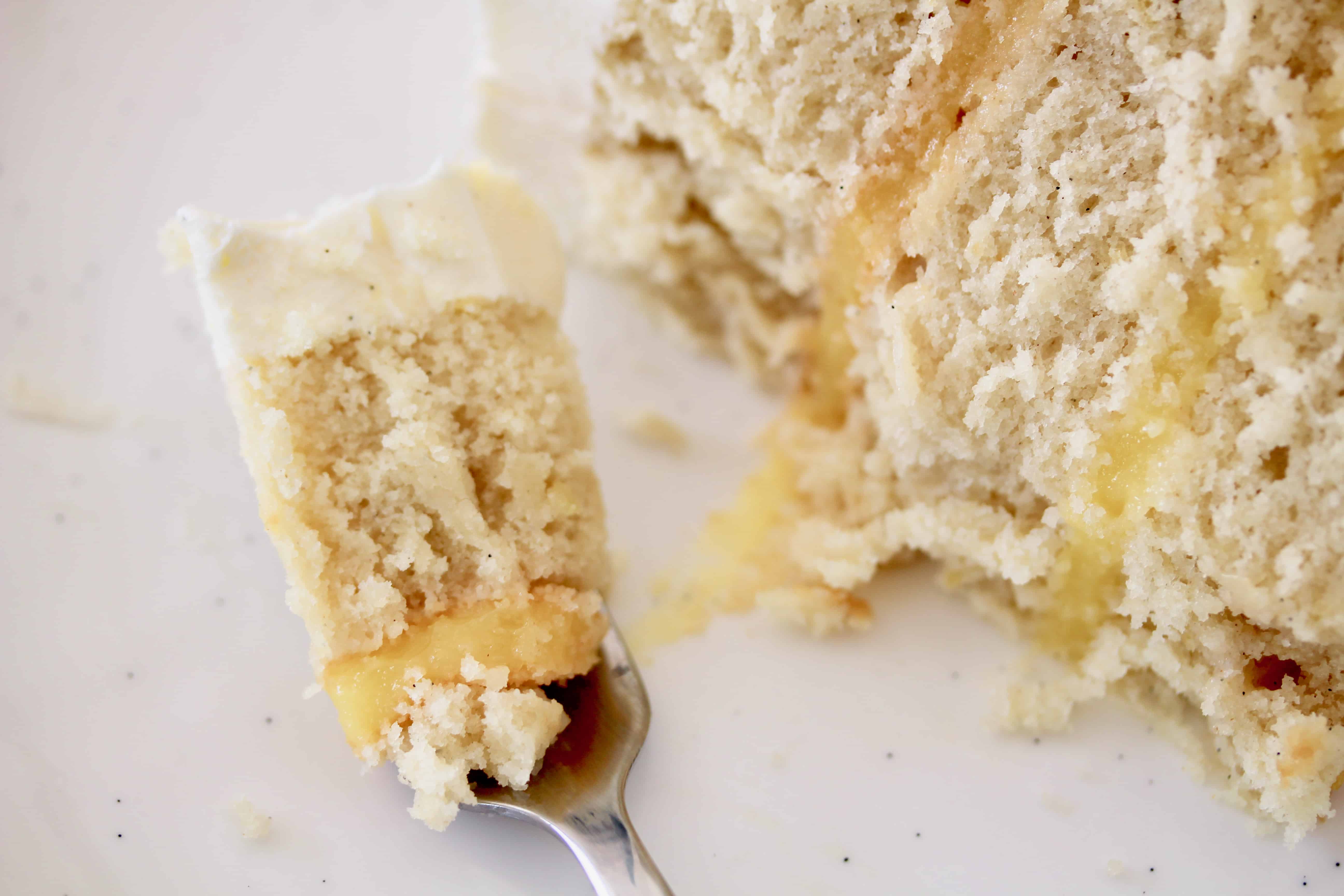
Now, when I originally made the cake, it was quite early in my layer-caking career, so I was curious to see how things would turn out now that I’m much more experienced. For the cake layers, I started by creaming the butter and vegetable shortening, then beating in sugar, lemon zest, and vanilla, followed by one whole egg. I used vanilla bean paste because I like the look of the vanilla flecks, and I also rubbed the lemon zest into the sugar to infuse the sugar with the oils from the lemon zest.

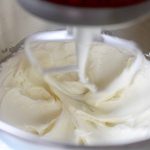

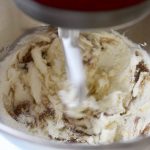
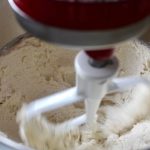
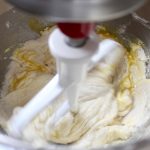
The next additions are the dry ingredients (cake flour, all-purpose flour, baking powder, baking soda, salt) alternating with ice water. (Note: I could not find cake flour in Israel, or at least I was unsure of the right one, so I did a standard substitution in which you use the same quantity of all-purpose flour, replacing 2 tablespoons of flour per cup with an equal amount of cornstarch. This worked completely fine.) Finally, I folded in egg whites that I’d beaten to soft peaks, which lightens the batter.
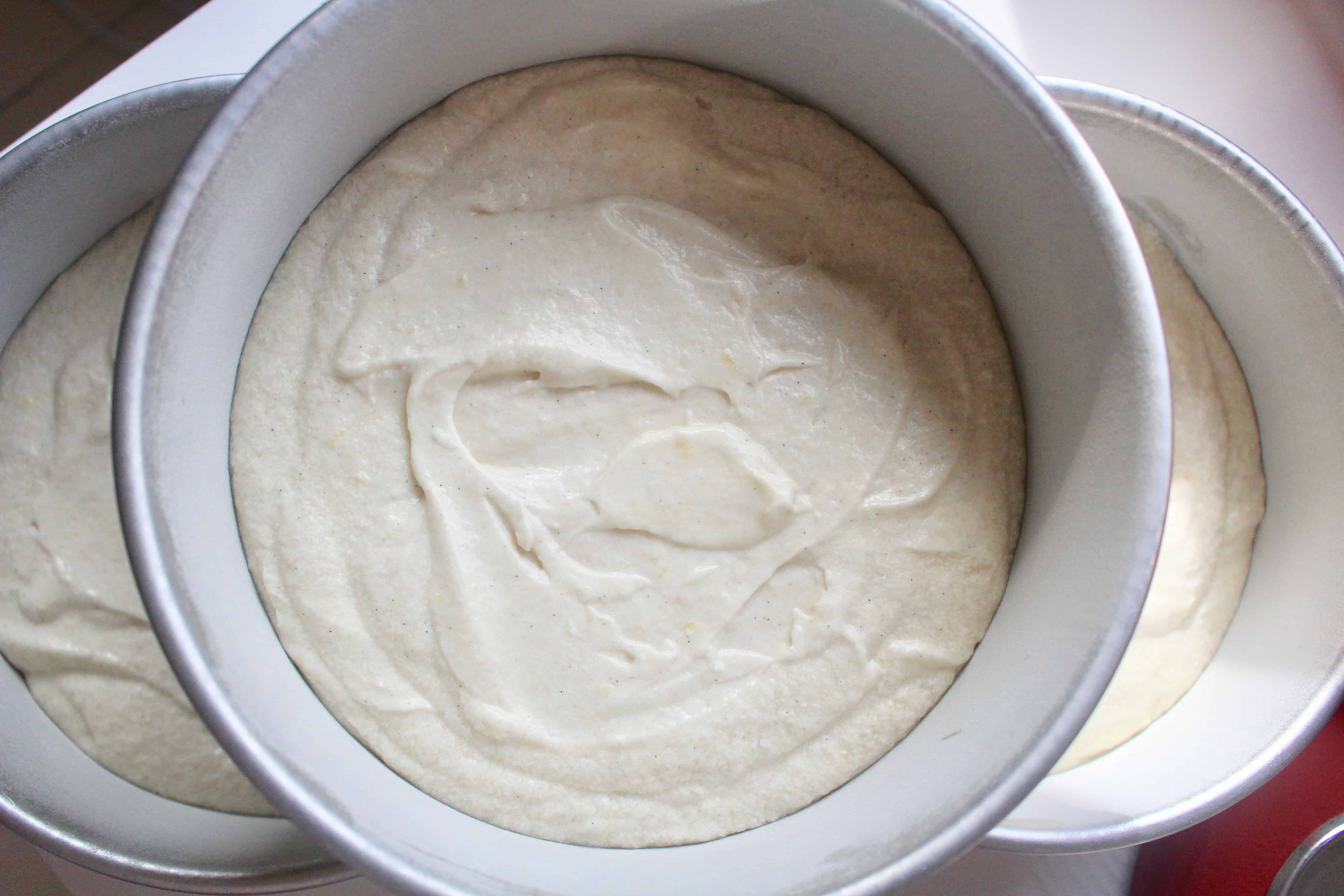
Baking these layers was, well, interesting. Mostly I think I got lucky. They didn’t rise much this time either, but they did bake perfectly level in my 3″-deep cake pans– those are badass, I’d never go back to the standard shorter ones. My Euro-style tiny oven in Israel was crazytown– for some reason I had a really hard time regulating a temperature of 325°F. Baking time is supposed to be in the neighborhood of 40-45 minutes, but the two cakes on the top rack baked in 18 (18!) minutes, while the bottom one still looked raw. I moved it up higher after removing the other two, and it baked completely in just 6 more minutes. Wild. I hoped they weren’t over- or underdone– the golden color was lovely and there was no sinking, which were both good signs. At the very least, they were quite easy to handle and work with.
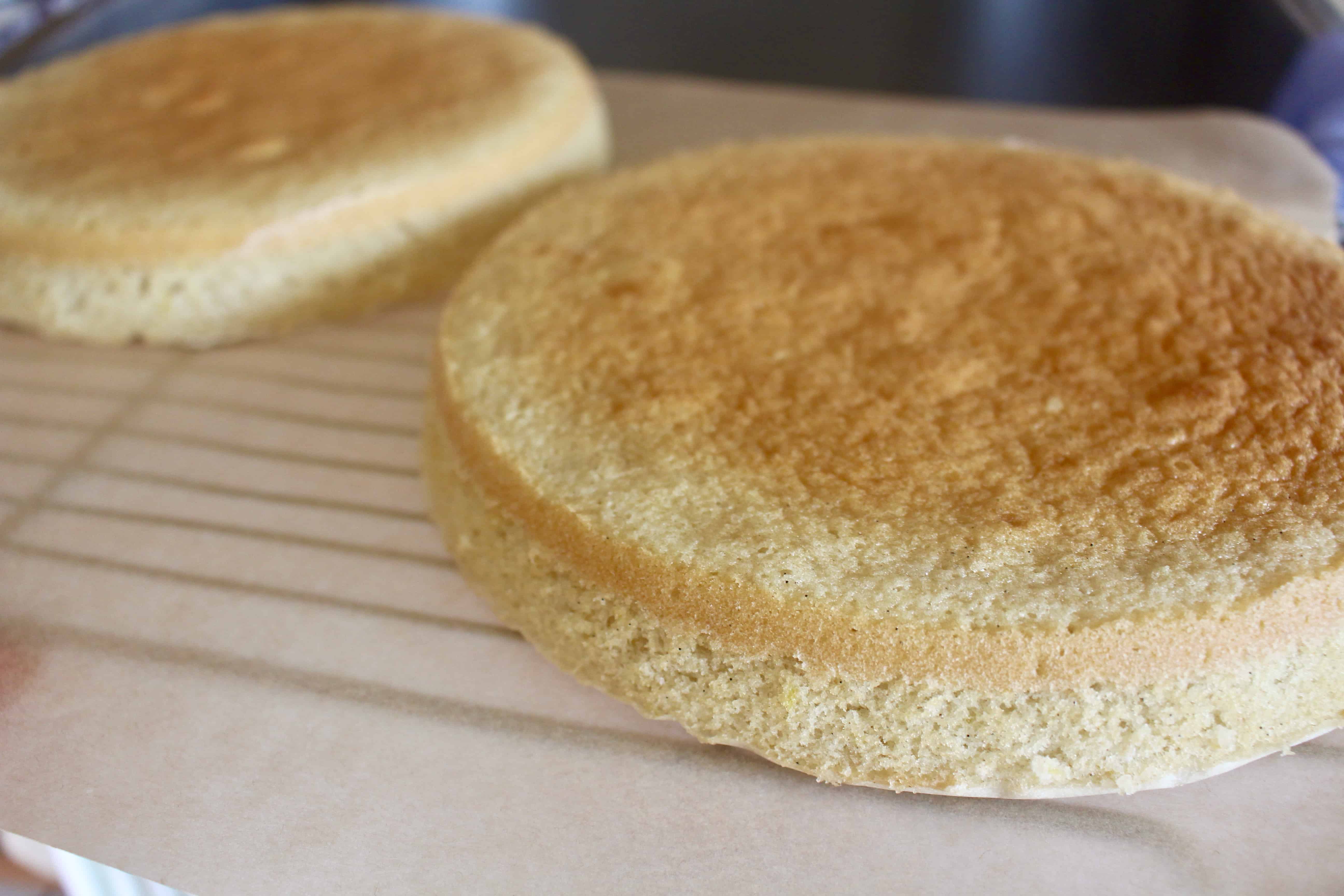
I then moved on to the lemon curd, and since fruit curds are not my forte, and given the difficulties of the first time, I braced myself for further issues. (I even considered buying ready-made curd, but I’m glad I didn’t.) I poured the lemon juice over the zest to soften it, then added this to a mixture of eggs, a whole lots of egg yolks, and sugar, all of which went over a pot of simmering water to cook gently.
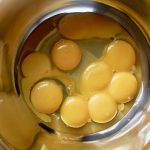
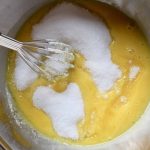
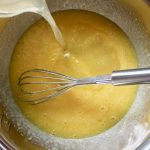
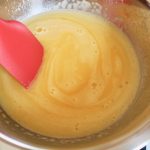
Not only did my first batch 5 years ago take a whopping *26* minutes to cook, rather than the *6* written in the recipe, it was also a little chunky due to cooked egg bits, similar to the texture of applesauce. To my utter delight, this time the texture was smoother, so maybe I’d had the heat up too high– no cooked eggs this time around. The curd did take 24 minutes of constant whisking, but it thickened beautifully. (And my triceps thank you, lemon curd.) The final two steps are whisking in butter and straining the mixture, and I was thrilled with the thick, silky lemon curd in my bowl; it looked a little dicey for a moment while whisking in the butter because the curd appears to separate, but it comes back together just fine. This particular lemon curd does not need to be refrigerated at this point unless you plan to save it for future use, which is not the case here.
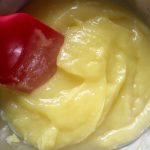
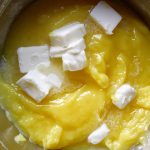
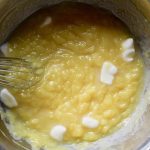
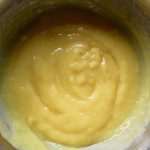
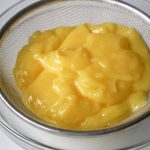
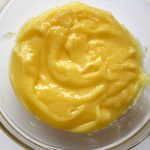
And finally, the frosting. BAKED’s cooked frosting used to be such a drama for me every time, and I’m sooo happy to say that I’ve been making it (mostly) consistently well and correctly for the past couple of years, such that it no longer stresses me out each time. (However, I just might hold back ½ stick of butter in the future because it is so buttery.) I think, after 6 years, I can finally say I’ve got the hang of it… but who knows. 😉
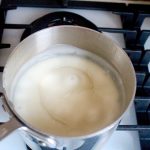
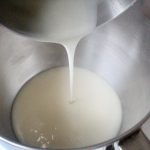

The frosting is made by combining flour, sugar, milk, and heavy cream in a saucepan and bringing this mixture to a thick boil. You’ll then pour it into a stand mixer bowl (steamy!) and beat it until it cools to room temperature, then add 3 sticks of cool-but-not-cold butter a few cubes at a time until it’s all incorporated. The temperature of both the cooked mixture and the butter are crucial– the mixture must not be hot, and the butter needs to be not-too-cold and not-too-soft; there is definitely a sweet spot. Once all the butter has been added, let the mixer go until the frosting whirls into a gorgeous, fluffy cloud– it’s one of my favorite processes to watch. For this lemony iteration, you’ll add in a healthy dollop of the lemon curd along with vanilla and beat it until these additions are fully blended. Then proceed to enjoy a perfectly sweet-tart, dreamy lemon frosting… *sigh*
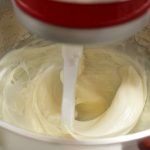
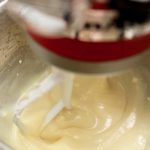
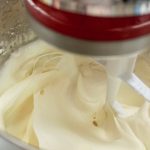
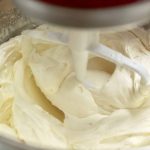
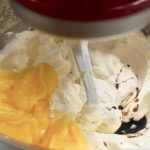
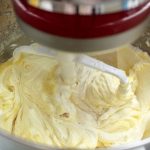
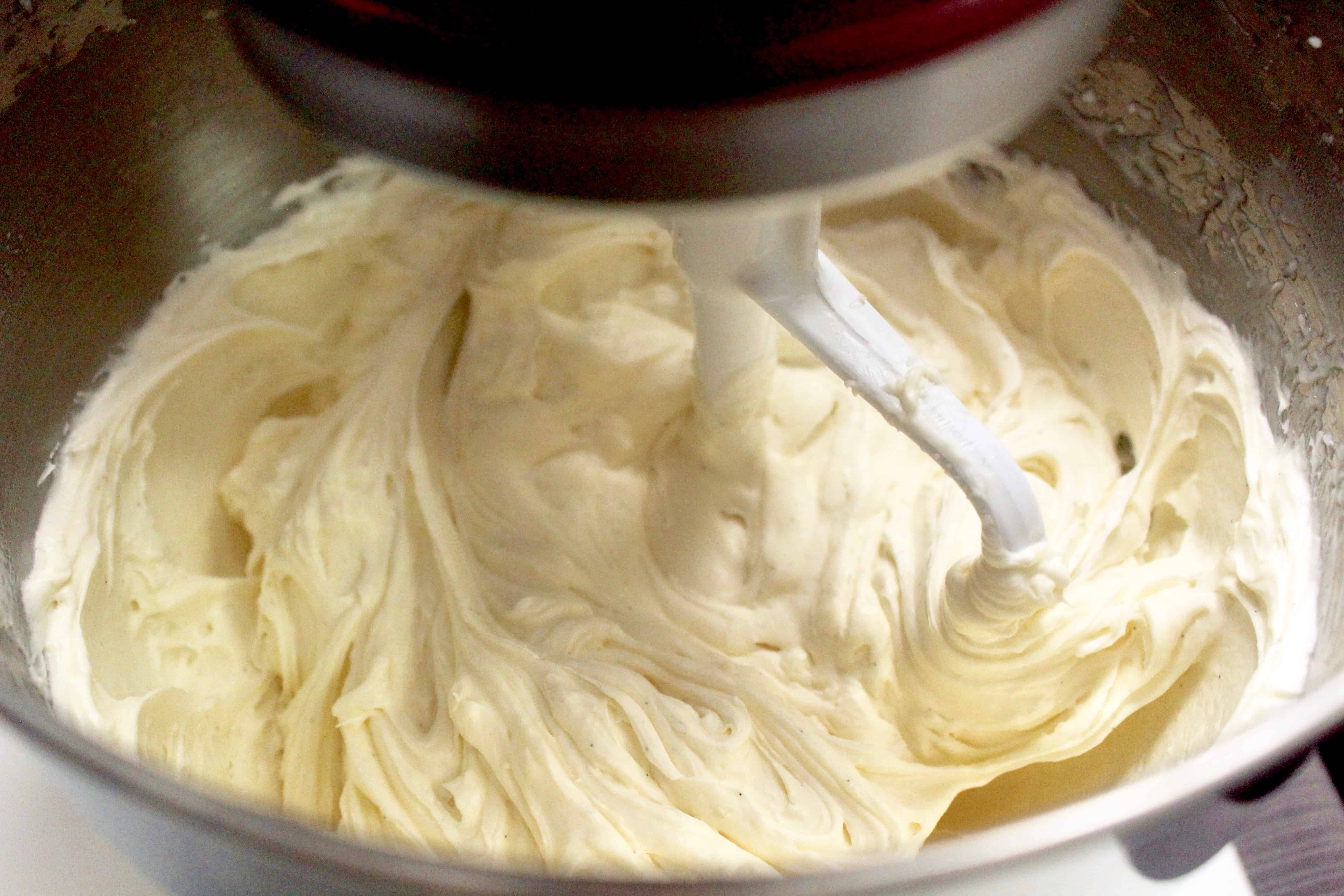
I anticipated that building this cake would be tricky again because of the lemon curd. However, because it was definitely thicker than the first time, I decided to forgo the two alternate options I’d considered and try the assembly as written. Stacking the layers was, in fact, very precarious and slippery; at that point, I regretted not having at least piped a border around the cake edges. Nevertheless, the cake got built successfully, and I was super pleased with it. The other thing that I’d like to rectify is that since this is the same frosting recipe as every other BAKED cake, which includes enough for two filling layers, there was so much extra frosting, which was sad to waste. A solution I might consider next time is to spread a layer of frosting and a layer of curd between the cake layers. The cake is short anyway (at least for me since my layers didn’t rise much), so adding two extra filling layers would a) make it more stable, and b) make it taller. Also! I could make a dozen lemon, coconut, or vanilla cupcakes to employ as frosting vehicles. Yes, I think that might be the way to go…
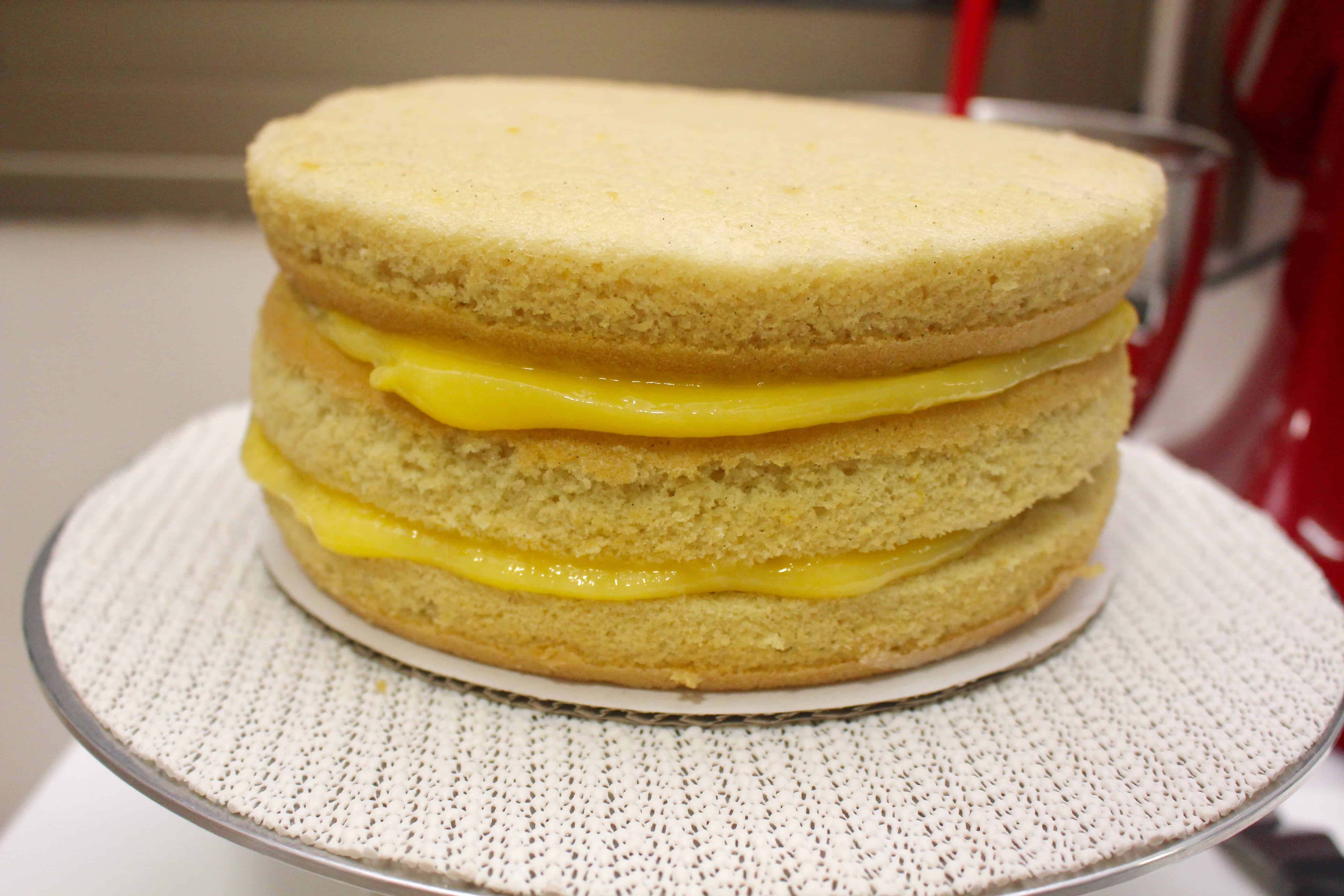
This cake turned out to be a lovely afternoon/evening project. For once, I wasn’t rushed in making it (except for the waning natural daylight for photos), so I had enough time to refrigerate it as needed. I was anxious to know how the quick-cooking cake layers baked up, and when I sliced into the cake the next morning, I was both shocked and ecstatic to discover that the cakes were absolutely perfect! I think that “curing” the cake in the fridge overnight also helped the cake to absorb a bit of moisture from the frosting and filling, and the texture was positively luxurious– fluffy, yet dense, cake (in a good way– in other words it didn’t crumble); smooth, zingy lemon curd; and creamy, buttery frosting. This is one of the best layer cakes I’ve made in a while, and surprisingly one of my favorites to eat, given my ambivalence toward lemon desserts!
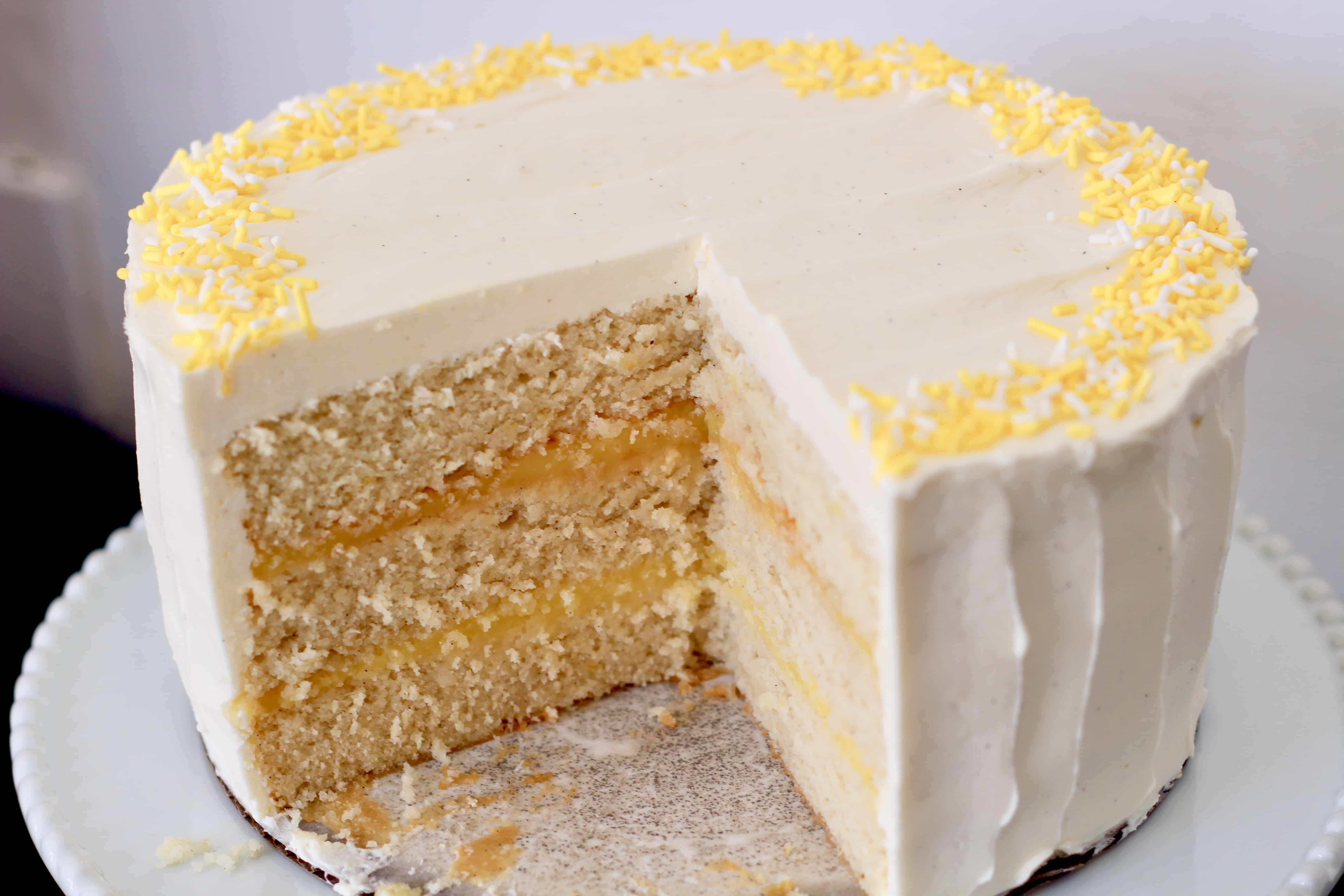
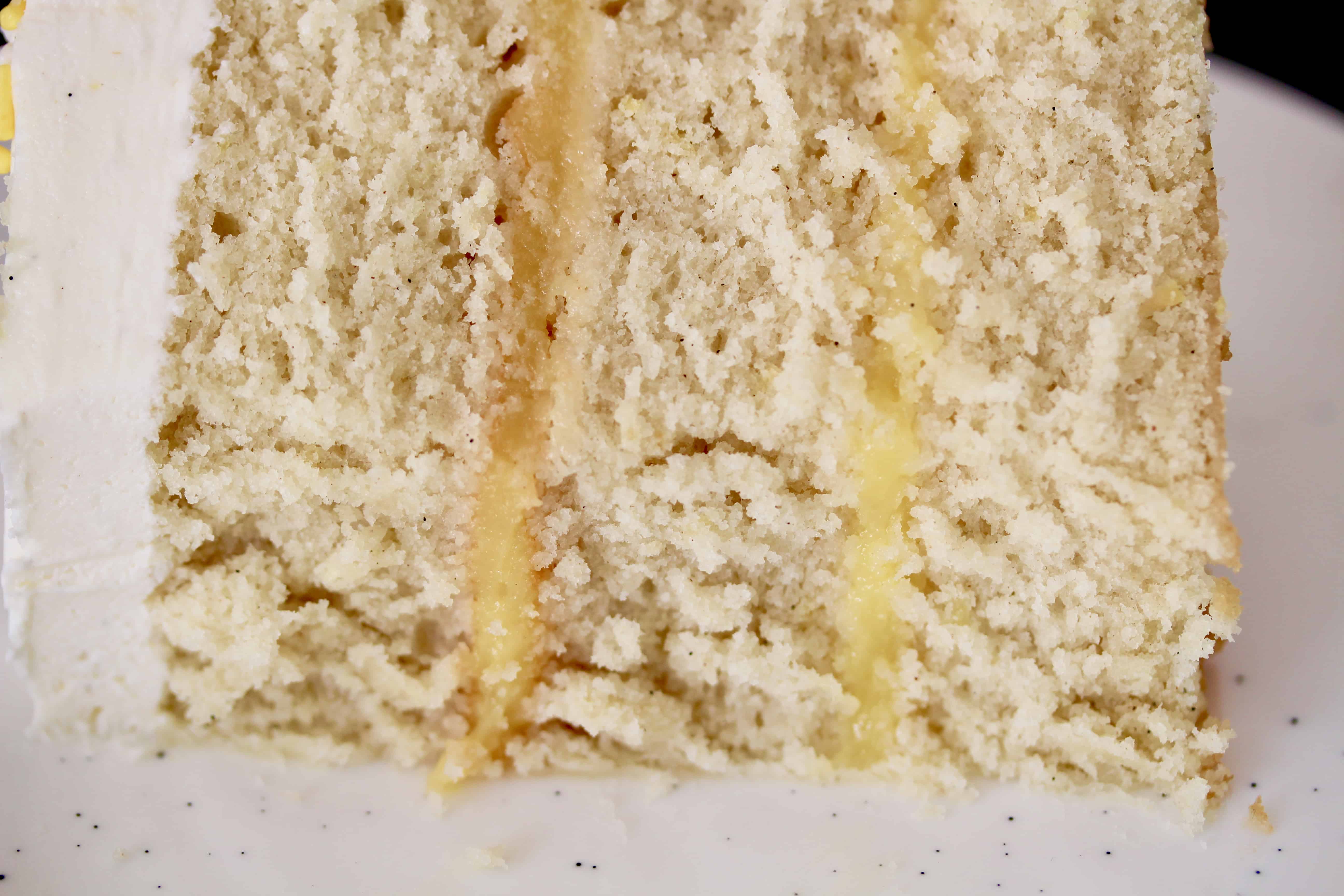
The book describes this cake as “summer sunshine on a plate”, which seems like an odd choice for December (except that citrus is, in fact, in season). But think of it as the reverse of Christmas in July– you know, when TV networks seem to air reruns of Christmas episodes for some reason? But really, this cake is lovely at any time of year, for any cake-friendly occasion, at least in my always-pro-cake opinion. And certainly any lemon lover in your life will go bonkers over it. You can find the recipe for Lemon Drop Cake at Baked Sunday Mornings— it is a gem of a recipe and well worth the hours that it takes to lovingly craft this beauty. (I did not decorate it with the eponymous lemon drop candies, but you can certainly do this.) While you’re at BSM, check out the other bakers’ lemon cakes too! 🙂
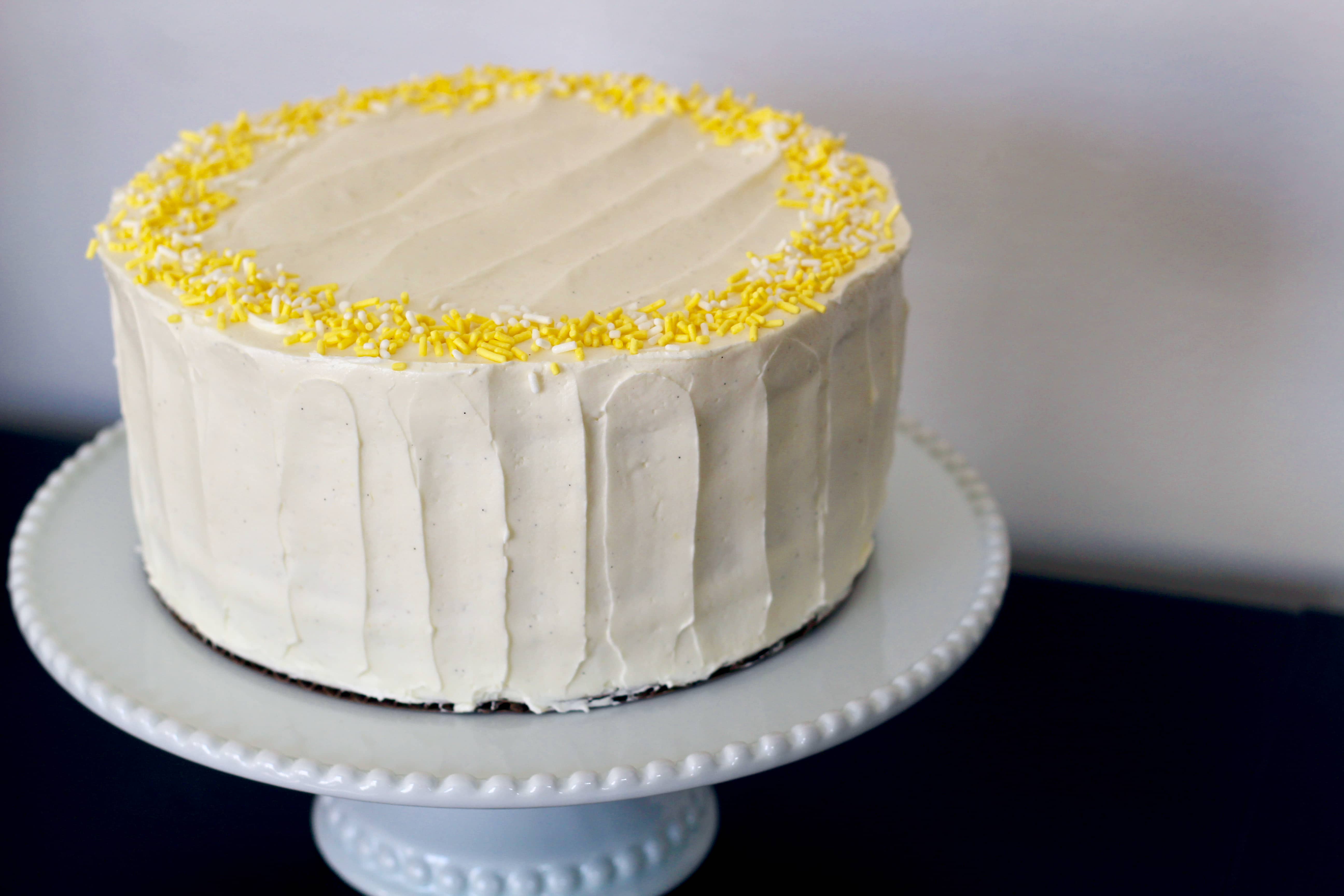
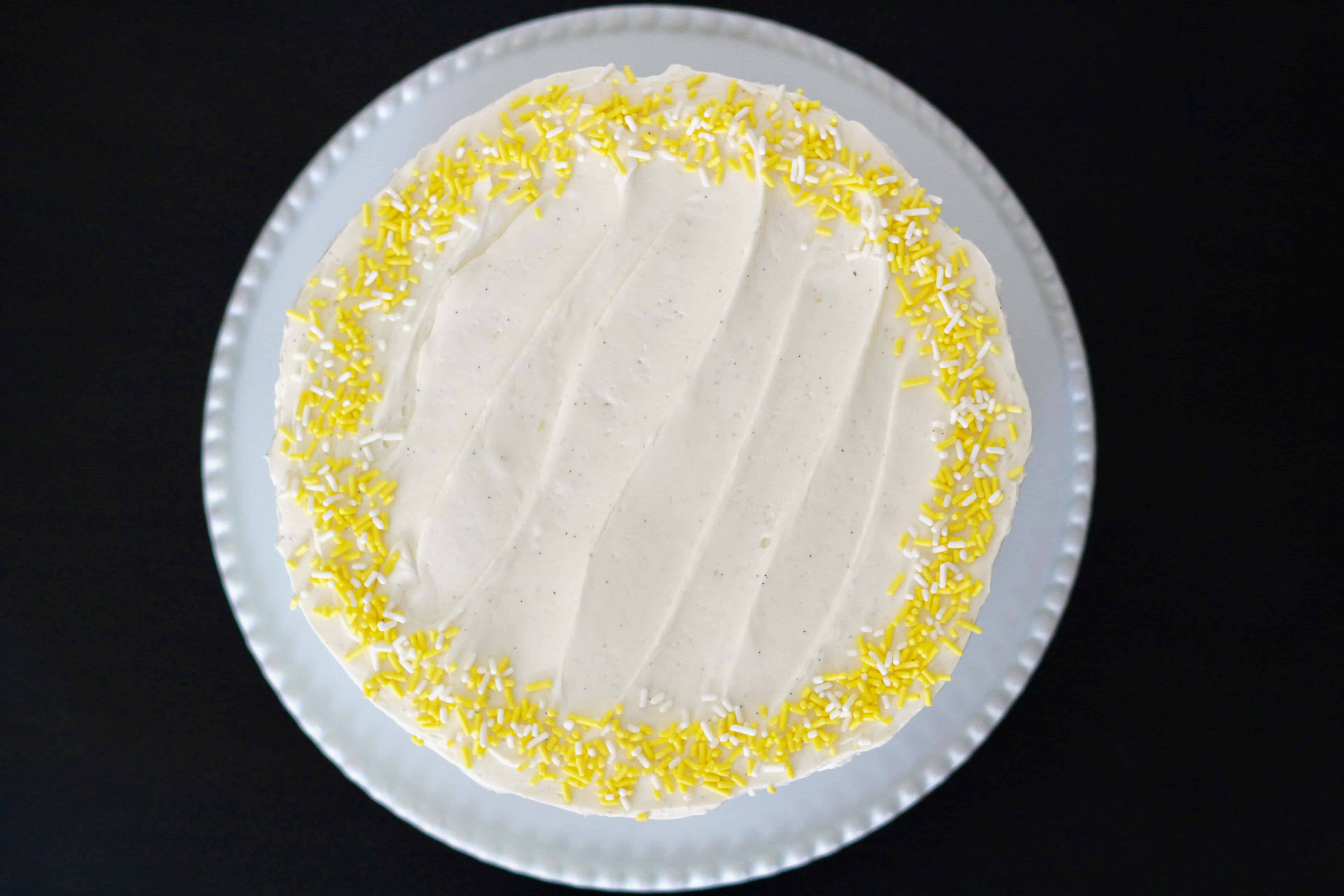
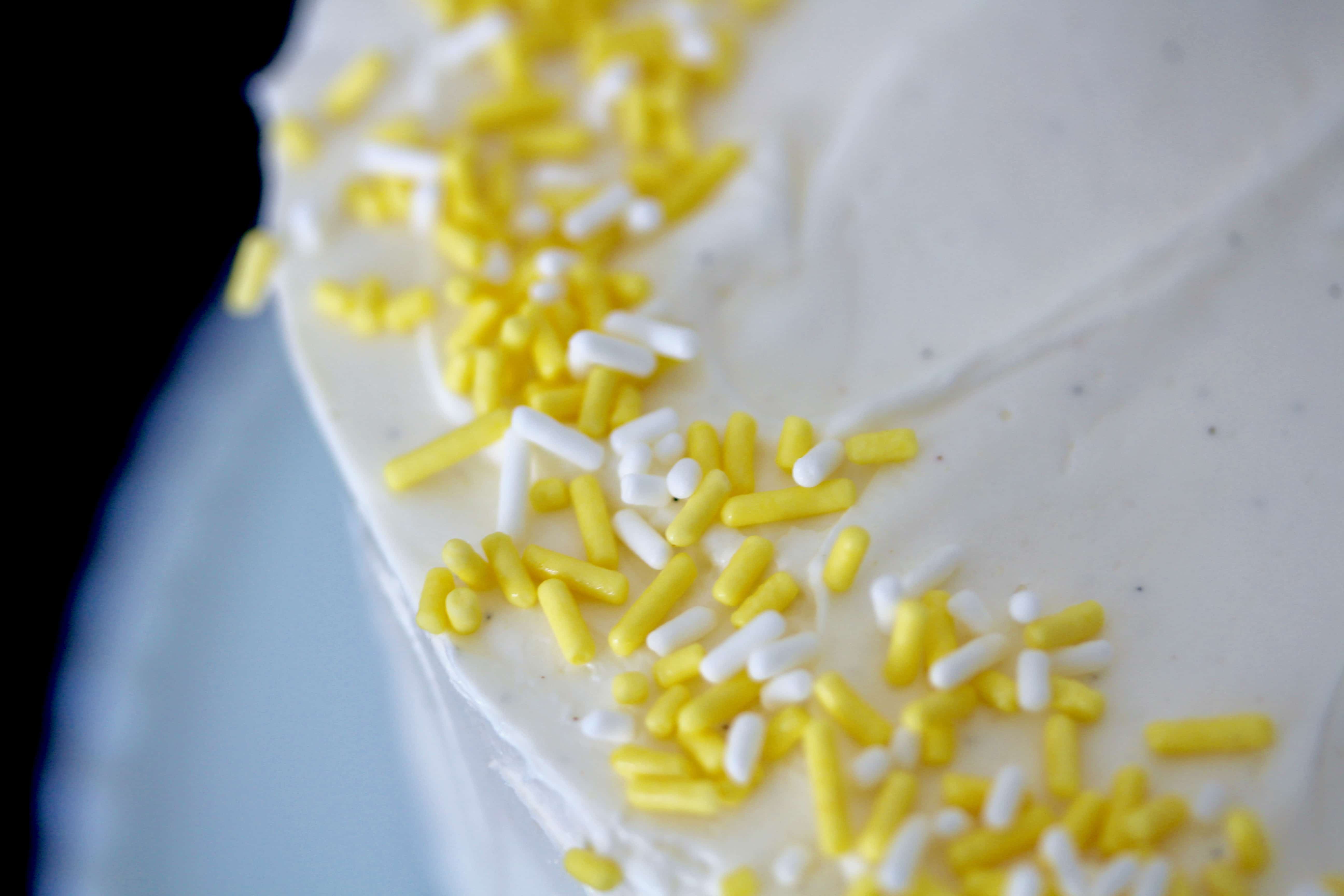
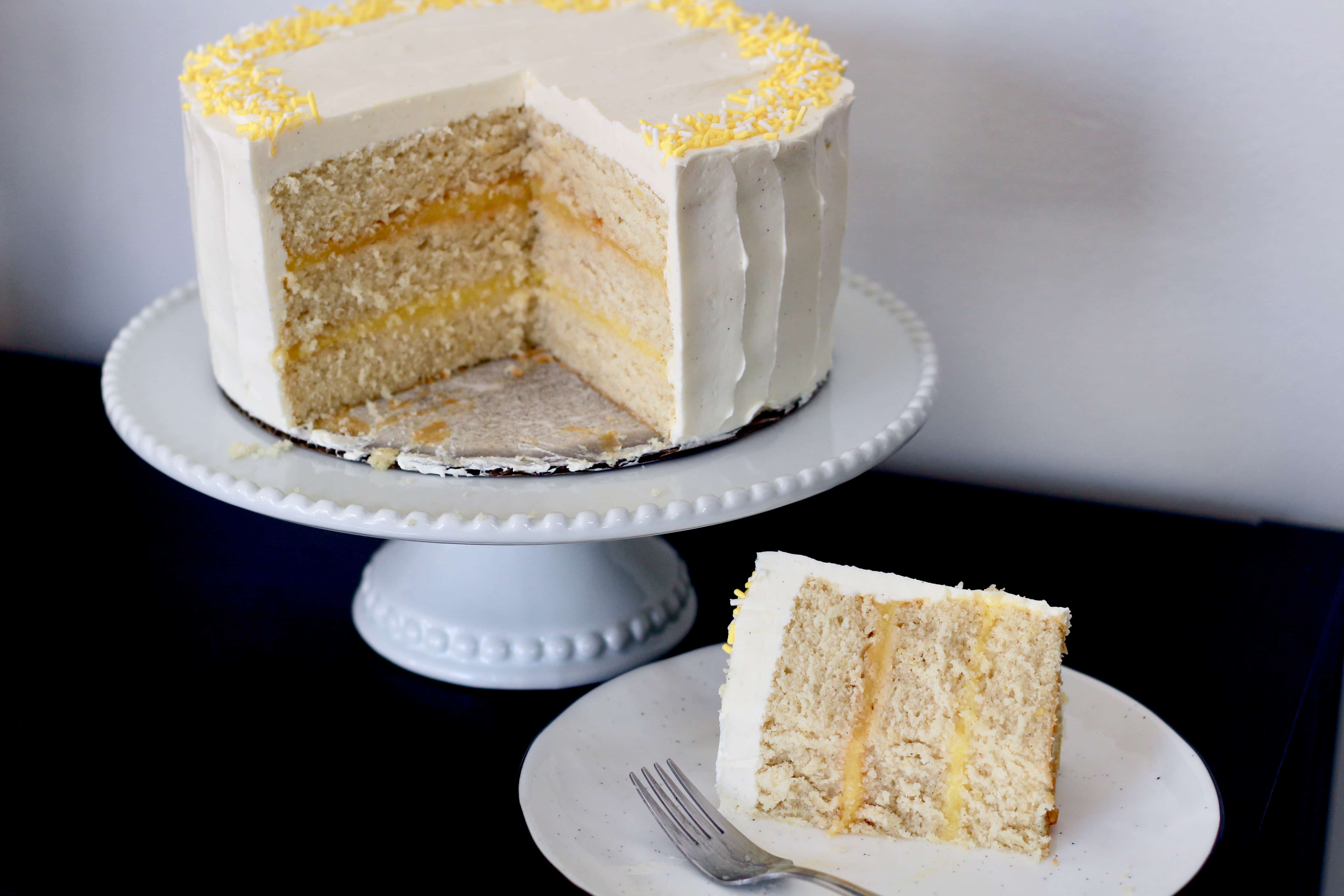
© Dafna Adler & Stellina Sweets, 2018.




